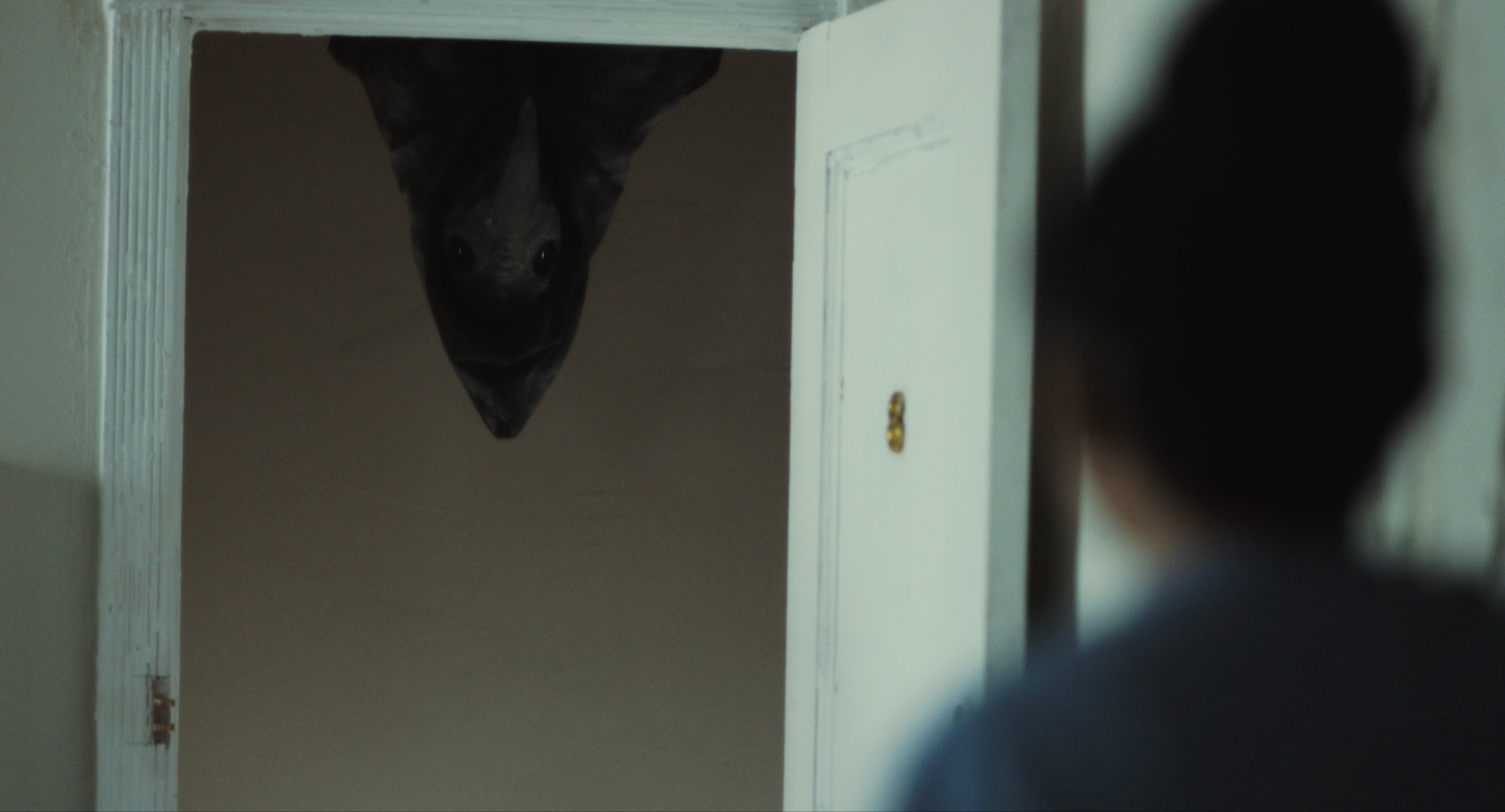COVID-inspired horror movies have spawned their own subgenre and will probably continue to appear for decades. Right now these films exist as a means to present recent events and discuss the trauma associated with this time period. Hopefully, many decades in the future, the subgenre will serve as a glimpse into the past and terrors long forgotten. After making its way around various film festivals for the last few months, writer/director Andy Mitton’s (THE WITCH IN THE WINDOW) THE HARBINGER has finally gotten a theatrical and digital release. Using the most recent pandemic to set the stage, Mitton uses horrific imagery of a plague doctor to catch our attention, but once we’re fully engrossed in this waking-nightmare the film goes beyond the visual scares and encapsulates the mental and emotional trauma which still plagues many people today.

Safe within her family’s bubble, Monique (Gabby Beans), her brother Lyle, and their father Ronald spend their time day drinking and playing endless matches of Parcheesi. They follow a strict routine which keeps them distant from anyone outside their home and while stressed, they still live a safe and happy life. But then one day Monique chooses to risk exposure to the COVID virus as well as contaminating her home and her already ailing father. Why go to such risks? Because her old friend Mavis (Emily Davis) needs her help, and the situation is life or death. Isolated from everyone due to the pandemic, Mavis keeps experiencing night-terror level dreams. And each time she enters this nightmare world it becomes harder to wake.

After reuniting, Mavis tells Monique that time exists differently when in the dream world—she will experience several days or even months while unconscious. The dreams seem a lot like real life except a demon known as the Harbinger disguises itself as a plague doctor and haunts Mavis’ mind and threatens to erase her from existence; not only killing her but making it so her loved ones forget her completely. And much like the real-life contagious virus going around, the nightmare can also be transmitted from one person to the next. So, after only a short time with Mavis, Monique also starts to see the nightmare. The image of the plague doctor appears in numerous horror movies and games, but Mitton touches on the symbolism of the character in a slightly different way. When the Black Death ruled Europe, a group of so-called physicians existed who would arrive in their long, dark robes and beak-like masks. They were called the Plague Doctors, but this name is a misnomer because they did not treat the sick and dying. Instead, they would help with wills and other legal documents, and basically showed up to count the dead. So, instead of associating these figures with health and hope, plague-ravaged towns viewed the Plague Doctors as harbingers of death.
Mitton’s movie touches on life during a pandemic, which obviously remains unsettling, but THE HARBINGER pulls from other influences, too, which helps distinguish it from other COVID-themed films (as well as the other HARBINGER movie coming out at the same time). The haunting of dreams gives the helpless feeling of a NIGHTMARE ON ELM STREET movie as the Harbinger plays a sort of Freddy Krueger character, only attacking people in their dreams. And aside from the main villain, the contagious manner of the nightmare also reminds me of THE RING. While trying to investigate the demon online, Mavis and Monique receive a warning to take down their drawing and posts about the Harbinger because they will expose others to the nightmares. Just hearing about the Harbinger can cause it to appear and then it’s only a matter of time before it has you too.

The plague doctor mask will always be creepy, so the director knew how to scare his audiences, but he also touched on the psychological and emotional trauma of the pandemic. When death hit a family or a community, they were robbed of a proper good-bye. Unable to see their loved ones before they died and even after they passed away, the mournful loved ones could not even turn to each other for comfort. The dead could not be grieved, and the survivors had to just keep on living like nothing happened. Mitton also robs his characters of their ability to mourn but does so by completely erasing the deceased. Not only does their death not warrant a memorial or a gathering, but their lives also never mattered.
Overall, the imagery of the film brings a significant level of creepiness and some well-timed jump scares, which should keep the audience on their toes. Despite some weaker moments in the third act and some stifled dialogue, THE HARBINGER brings a lot to this growing subgenre. Disturbing imagery, effective storyline, strong acting, and a well-crafted allegory makes this film a highly recommended nightmare. Mitton took a risk with making a COVID horror film while audiences are still experiencing the events in real life, but he approached the topic in a manner genuine enough to leave an impact.
Tags: Andy Mitton, COVID, Emily Davis, Gabby Beans, Horror, Laura Heisler, Ludovica Isidori, Qiana Watson, Raymond Anthony Thomas, Stephanie Roth Haberle, XYZ Films



No Comments